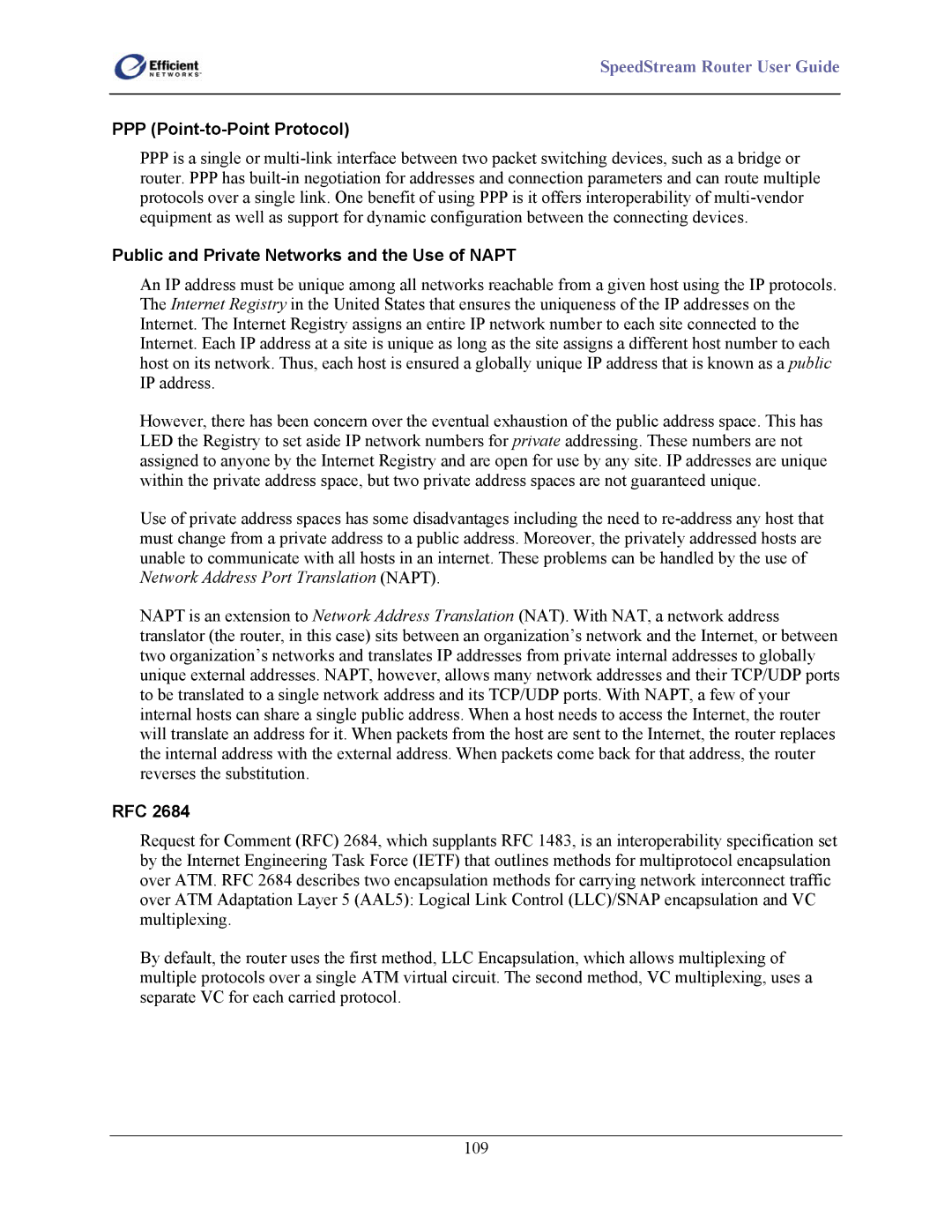
SpeedStream Router User Guide
PPP(Point-to-Point Protocol)
PPP is a single or
Public and Private Networks and the Use of NAPT
An IP address must be unique among all networks reachable from a given host using the IP protocols. The Internet Registry in the United States that ensures the uniqueness of the IP addresses on the Internet. The Internet Registry assigns an entire IP network number to each site connected to the Internet. Each IP address at a site is unique as long as the site assigns a different host number to each host on its network. Thus, each host is ensured a globally unique IP address that is known as a public IP address.
However, there has been concern over the eventual exhaustion of the public address space. This has LED the Registry to set aside IP network numbers for private addressing. These numbers are not assigned to anyone by the Internet Registry and are open for use by any site. IP addresses are unique within the private address space, but two private address spaces are not guaranteed unique.
Use of private address spaces has some disadvantages including the need to
NAPT is an extension to Network Address Translation (NAT). With NAT, a network address translator (the router, in this case) sits between an organization’s network and the Internet, or between two organization’s networks and translates IP addresses from private internal addresses to globally unique external addresses. NAPT, however, allows many network addresses and their TCP/UDP ports to be translated to a single network address and its TCP/UDP ports. With NAPT, a few of your internal hosts can share a single public address. When a host needs to access the Internet, the router will translate an address for it. When packets from the host are sent to the Internet, the router replaces the internal address with the external address. When packets come back for that address, the router reverses the substitution.
RFC 2684
Request for Comment (RFC) 2684, which supplants RFC 1483, is an interoperability specification set by the Internet Engineering Task Force (IETF) that outlines methods for multiprotocol encapsulation over ATM. RFC 2684 describes two encapsulation methods for carrying network interconnect traffic over ATM Adaptation Layer 5 (AAL5): Logical Link Control (LLC)/SNAP encapsulation and VC multiplexing.
By default, the router uses the first method, LLC Encapsulation, which allows multiplexing of multiple protocols over a single ATM virtual circuit. The second method, VC multiplexing, uses a separate VC for each carried protocol.
109
